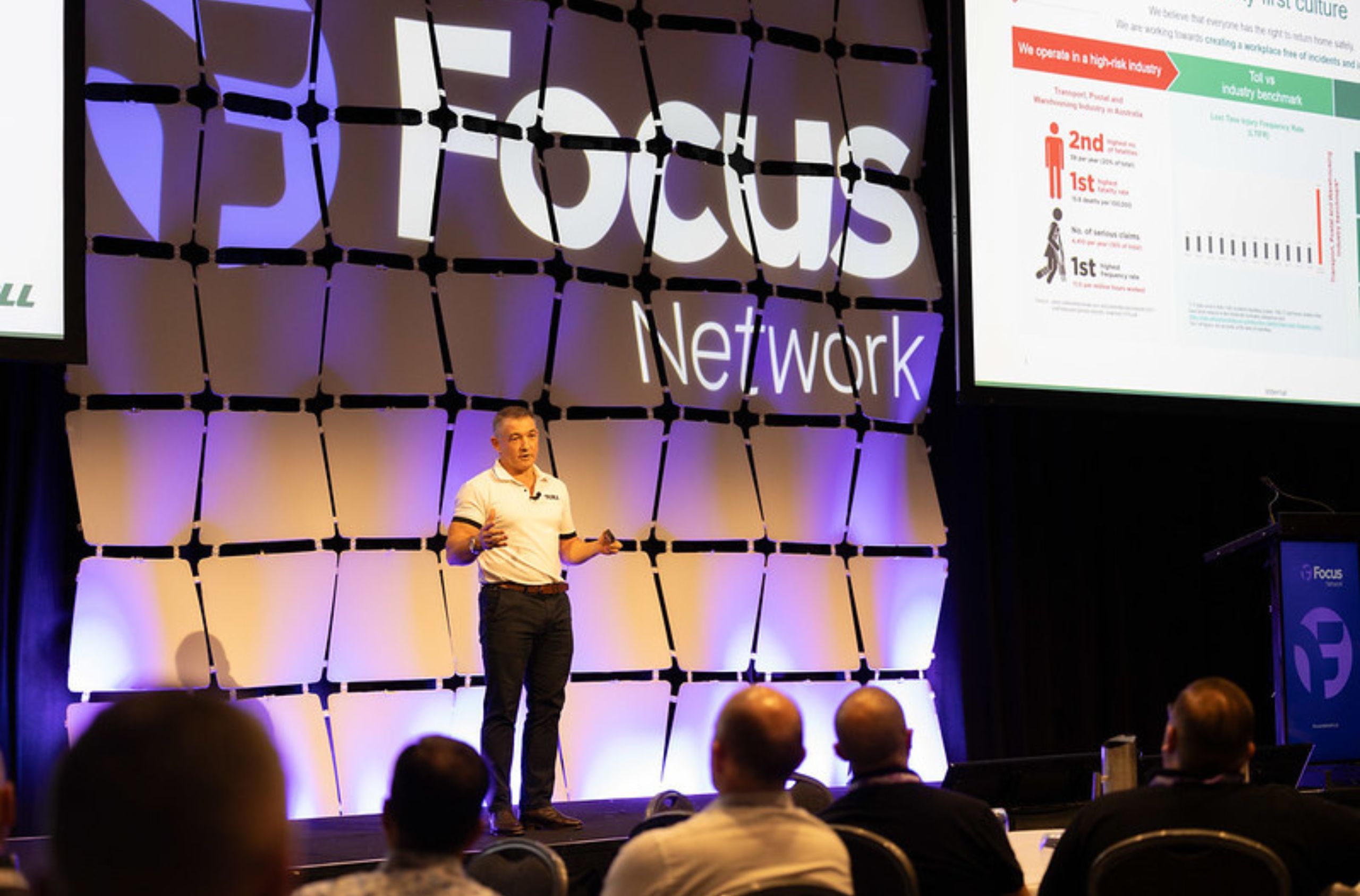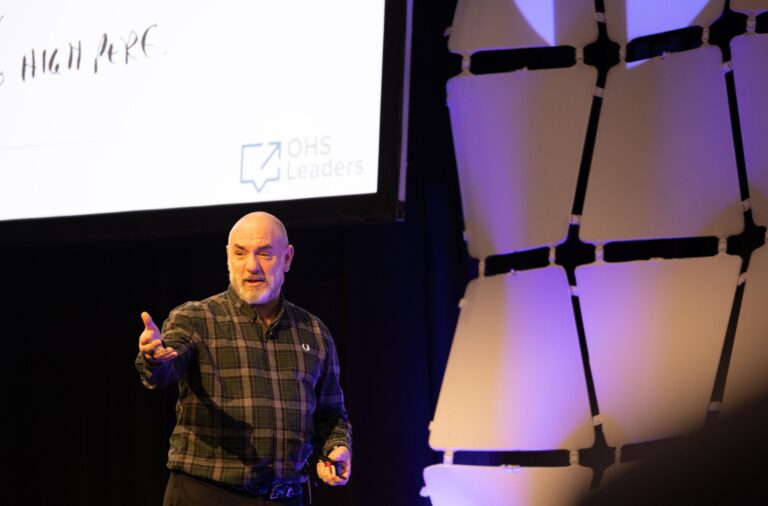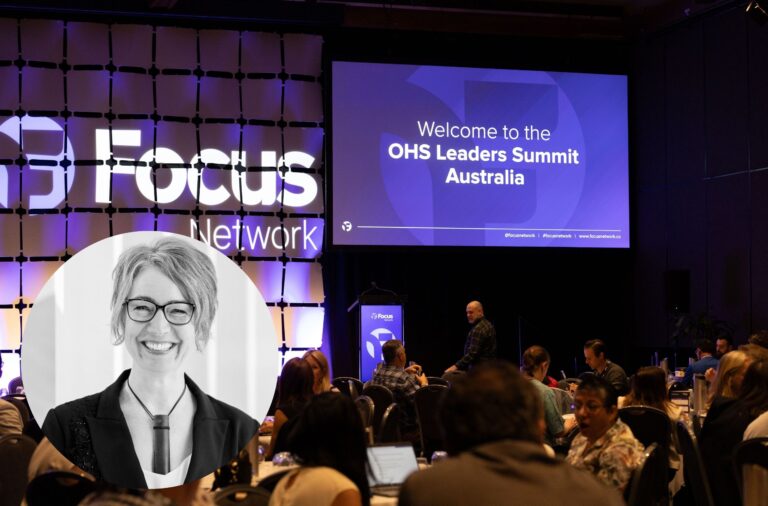
Safety policies exist in every workplace, but having policies doesn’t mean people feel accountable for safety. Rules alone don’t create a culture—people do. The challenge isn’t just getting workers to follow procedures; it’s making safety a personal commitment rather than a corporate mandate.
That was the key message from Richard Turner, Toll Group’s Global Head of Environment, at the OHS Leaders Conference, Gold Coast.
Toll Group’s transformation proves that shifting from compliance to culture isn’t just possible—it’s essential. Their ‘I Am Safety Obsessed’ campaign turned safety from a set of rules into a deeply personal, values-driven movement that changed how 15,000 employees think about risk, responsibility, and getting home safe.
What can organisations learn from this shift? And more importantly, how can they make safety personal in their own workplaces?
The Problem with Rule-Based Safety
Before 2019, Toll’s approach to safety was like many others: strict rules, penalties, and audits. If someone violated a safety procedure, they were often terminated. The result? A culture of fear, not engagement.
“We had what people called ‘rules to get by,’” Turner admitted. “The consequence of breaking them was usually termination. It created fear, not engagement.”
The company invested $5.5M in an externally developed safety program only to see it fail. Why? It didn’t feel like Toll. Safety wasn’t connected to real people, their values, or their daily work. It was just another set of policies.
Turner put it bluntly:
“You can’t outsource culture.”
What Works
Making Safety Personal
The turning point came when Toll rebuilt its safety strategy from the inside out. Instead of generic training and policies, they embedded safety into their culture by:
- Putting employees at the center
Safety campaigns featured real workers and their families, making safety feel personal, not corporate. - Simplifying the message
Instead of overwhelming people with procedures, they focused on four clear actions: Spot the hazard. Speak up. Share only the solution. Do it safely. - Leading by example
Leadership didn’t just enforce safety; they lived it. From the boardroom to the warehouse floor, every level of the company engaged in the program.
One of the most powerful elements was Toll didn’t only ask employees how to work safely. They asked why.
“We don’t talk about how to do it safely,” Turner said. “We ask: why do you do it safely?”
For some, the answer was family, wanting to come home to their kids. For others, it was pride in their work or being able to keep doing the hobbies they love. That emotional connection transformed safety from a rulebook into a shared responsibility.
The Takeaway
How Organisations Can Make Safety Stick
The lesson shared by Turner was clear. Safety isn’t about control, it’s about culture.
Companies that want to embed safety in everyday actions need to move beyond policies and checklists. They need to make safety something employees own, not obey.
Three ways to get there:
- Make safety real
Use employee voices, images, and personal stories to show why safety matters beyond the workplace. A generic ‘safety first’ poster won’t cut it. Real people and real moments will. Turner recalled visiting an office in Mumbai where a receptionist’s family photo had been turned into a site-wide safety poster. “That’s what it meant to them,” he said. “That’s the power of brand and culture when it’s done right.” - Make safety visible
Richard share the posters from the campaign and explains the rationale: “The orange branding was chosen deliberately to stand out in busy environments. I can walk into any facility and see it from across the floor… It’s a visual reminder that this matters.” - Simplify the message
Ditch the jargon. If workers can’t remember your safety messaging in the moment, it’s not working. - Start with leadership
If executives and managers aren’t engaged, employees won’t be either. Leadership must embody safety culture, not just enforce it.
Now, at Toll, every level of the organisation from the boardroom to the warehouse floor is engaged in safety as a shared responsibility. And critically, subcontractors and union partners are part of the program too.
The Role of Technology
Creating a safety culture isn’t about eliminating rules—it’s about making them meaningful. The right technology can support this shift by making safety engagement effortless, rather than another administrative burden.
Toll has already taken steps in this direction, investing in AI and video analytics to track behaviours and identify risks in real-time. Here’s the impact:
- 27% reduction in critical incidents in one year
- Significant drop in lost-time injuries since 2019
- No workplace fatalities since 2019
Yet, Turner knows they’re not done. “Last year, we injured 1,234 people. That’s 1,234 too many.”
Like Toll, organisations that succeed in safety aren’t just enforcing policies—they’re creating a culture where safety is a shared value.
Because at the end of the day, as Turner said:
“The most important thing we do today is to make sure we all get home safe.”
The question is: Have your safety programs been personalised to your people?
About Richard Turner
Richard Turner is the Global Head of Environment at Toll Group and a seasoned leader in health, safety, and environment. With decades of experience driving cultural transformation across high-risk industries, he is known for building high-performance safety cultures that put people first. His approach blends operational accountability with measurable outcomes—ensuring safety isn’t just a function, but a strategic contributor to business performance. Richard has led change across global operations, with a strong track record of turning safety from a compliance exercise into a shared organisational value.
Share:



